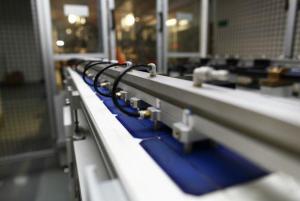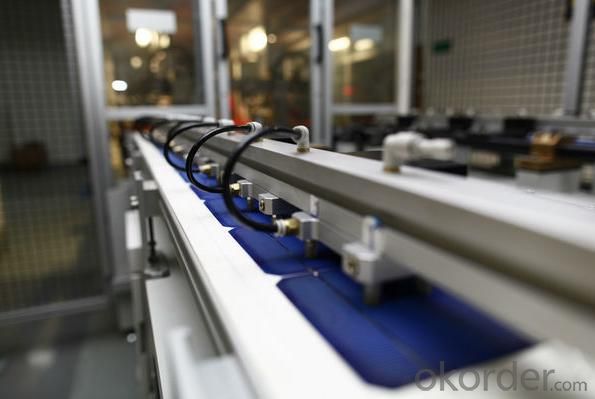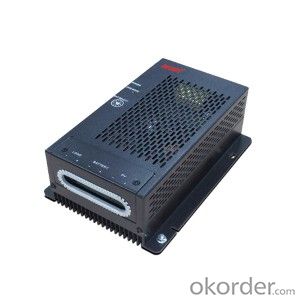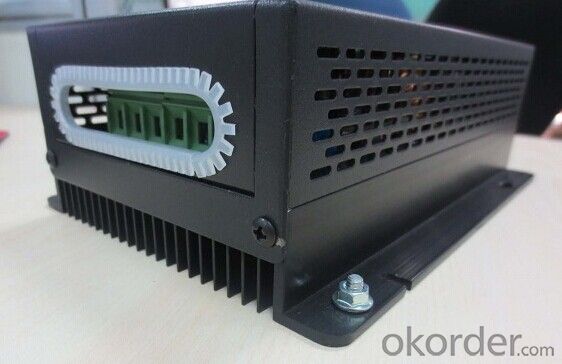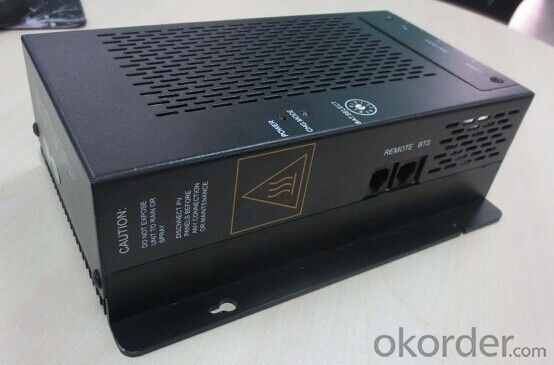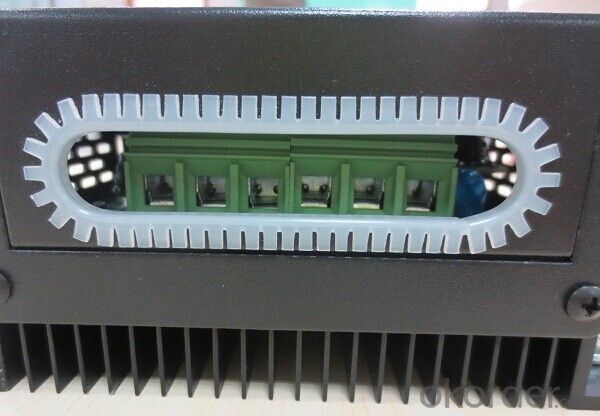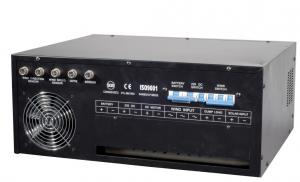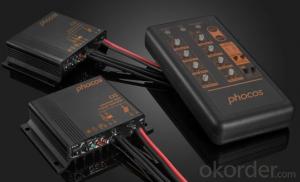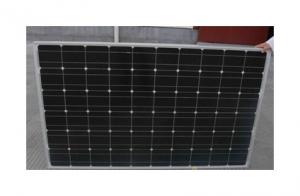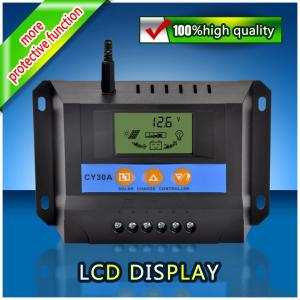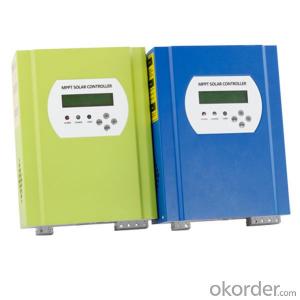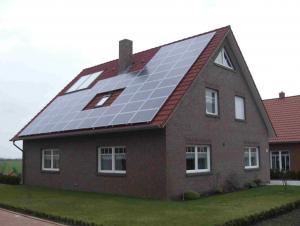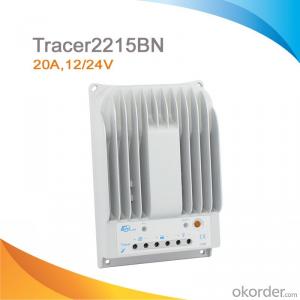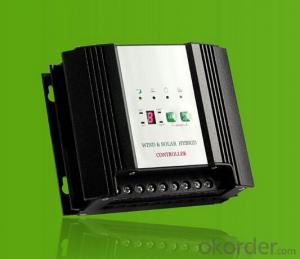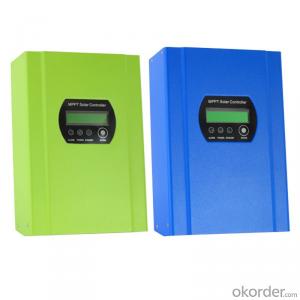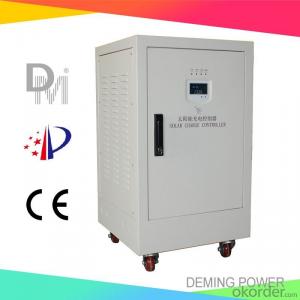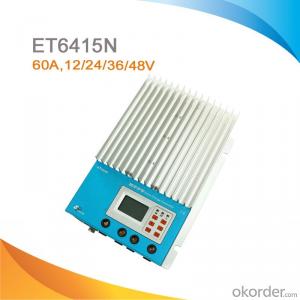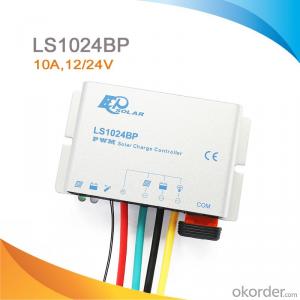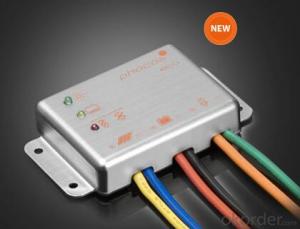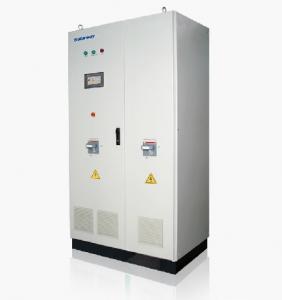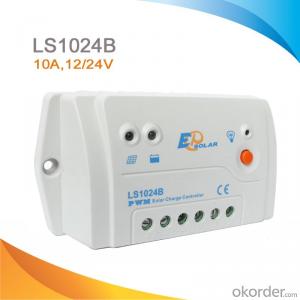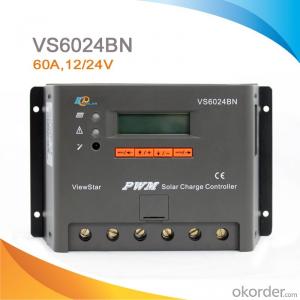Solar Controllers from Thailand Supplier - MPPT Solar Charge Controller 12V 24V 20A
- Loading Port:
- Shekou
- Payment Terms:
- TT or LC
- Min Order Qty:
- 100 pc
- Supply Capability:
- 100000 pc/month
OKorder Service Pledge
OKorder Financial Service
You Might Also Like
12V 24V 20A mppt china solar charge solar controller
PC1000 series solar controller Features:
1. MPPT Solar charge controller 20A,30A,40A
2.An optional battery temperature sensor ensures precise battery charging
3.Built-in MPPT tracker is enquipped in the power inverter to optimize the power transformation.
4.Reversed current protection for preventing equipment damage
5.Automatic battery temperature compensation for long -term reliability
6.Three stage charge control system (bulk,absorption,and float mode) with temperature compensation
7.Autamatic overload protection in both active and passive modes
8. MPPT efficiency max 90%
Detailed Description:
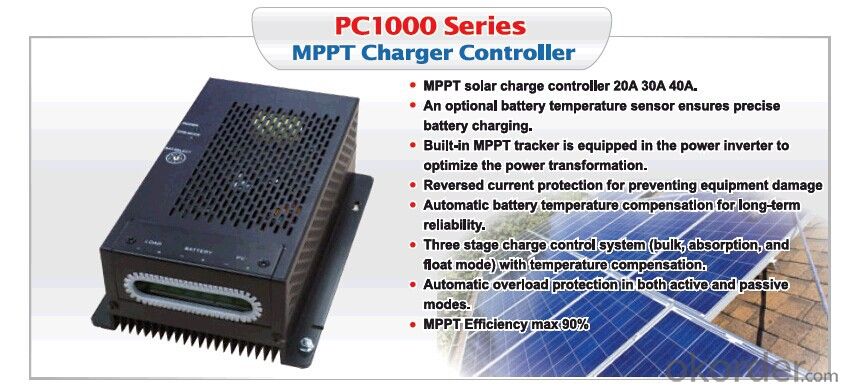
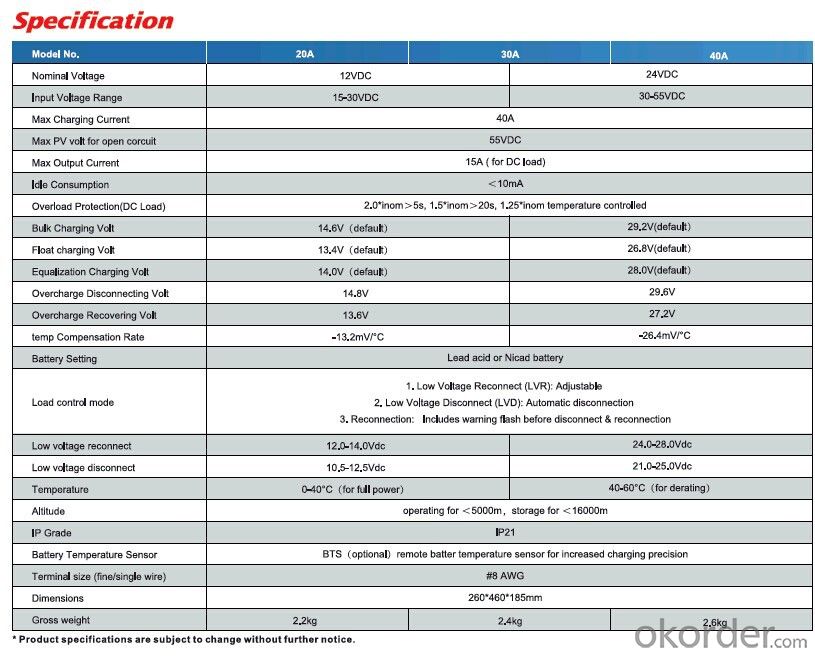
| Model | PC10-2005A | PC10-3005A | PC16-4005A | |
| Default Battery System Voltage | 12V/24V DC (adjustable) | |||
| CONTROLLER INPUT | PV Open Circuit Voltage Range | 16V~30V for 12V battery system / 32V~55V for 24V battery system | ||
| Max PV Input Power(12V) | 300W | 450W | 600W | |
| Max PV Input Power(24V) | 600W | 900W | 1200W | |
| BATTERY | Float Charging Voltage | 13.4V(default)/26.8V(default) | ||
| Bulk Charging Voltage | 14.6V(default)/28.6V(default) | |||
| Equalization Charging Voltage | 14.0V(default)/28.0V(default) | |||
| Battery Temperature Sensor | BTS(optional) remote batter temperature sensor for increased charging precision | |||
| DC OUTPUT | Output Voltage | 11.0~14.3VDC /22.0~28.6VDC | ||
| Max Charging Current | 40A | |||
| Max Output Current | 15A(for DC load) | |||
| Cutoff for Overcharge | 14.8V/29.6V | |||
| Overcharge Voltage Recovering | 13.6V/27.2V | |||
| Cutoff for Low Voltage | 10.5~12.5VDC/21.0~25.0VDC | |||
| Low Voltage Recovery | 12.0~14.0VDC/24.0~28.0VDC | |||
| GENERAL SPECIFICATION | Charge Mode | MPPT,constant current-constant voltage | ||
| Radiating Mode | Automatic cooling | |||
| Working Mode | Four stage: Absorption CC, Absorption CV, Float CC, Float CV | |||
| DISPLAY & PROTECTION | LED indication | Systematic operation, LV indication, LV protection, over charge protection, loads protection, short circuit protection | ||
| Alarm Protections | 2.0*inom>5s;1.5*inom>20s;1.25*inom temperature | |||
| Load control mode | 1.Low Voltage Reconnect(LVR):Adjustable | |||
| 2.Low Voltage Disconnect(LVD):Automatic | ||||
| 3.Reconnection:Includes waming flash before | ||||
| MECHANICAL SPECIFICATIONS | Mounting | Wall mount | ||
| W*H* D(mm) | 260*460*185mm | |||
| G.W(kg) | 2.2kg | 2.4kg | 2.6kg | |
| OTHER | Environmental Rating/IP Grade | Indoor/IP21 | ||
| Operation Temperature Range | 0~40°C(for full power)/40~60°C(for derating) | |||
| Ambient humidity | 0~90% relative humidity(non-condensing) | |||
| Altitude | ≤5000m | |||
| Terminal size (fine/single wire) | #8AWG | |||
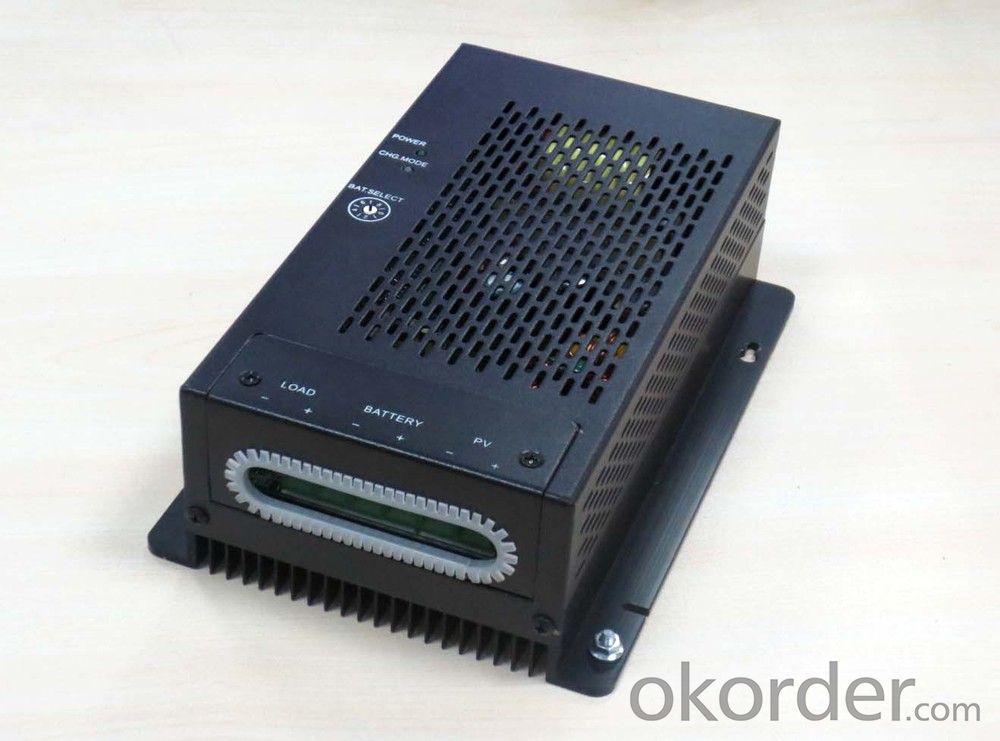
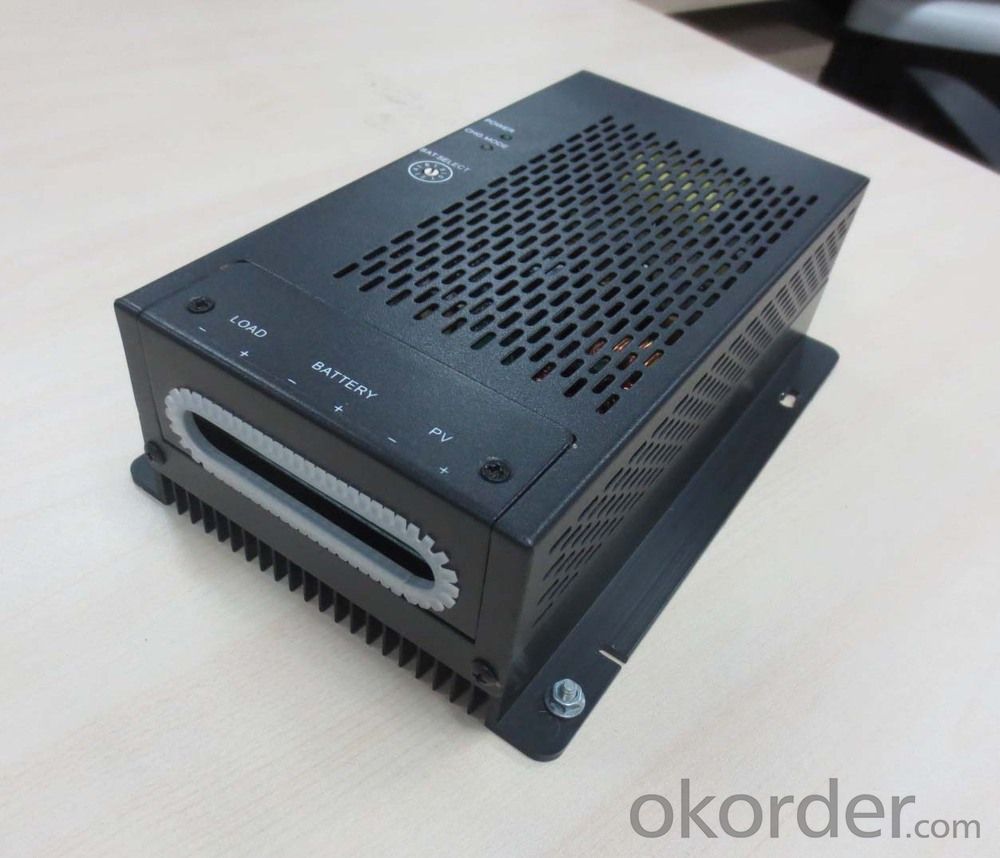
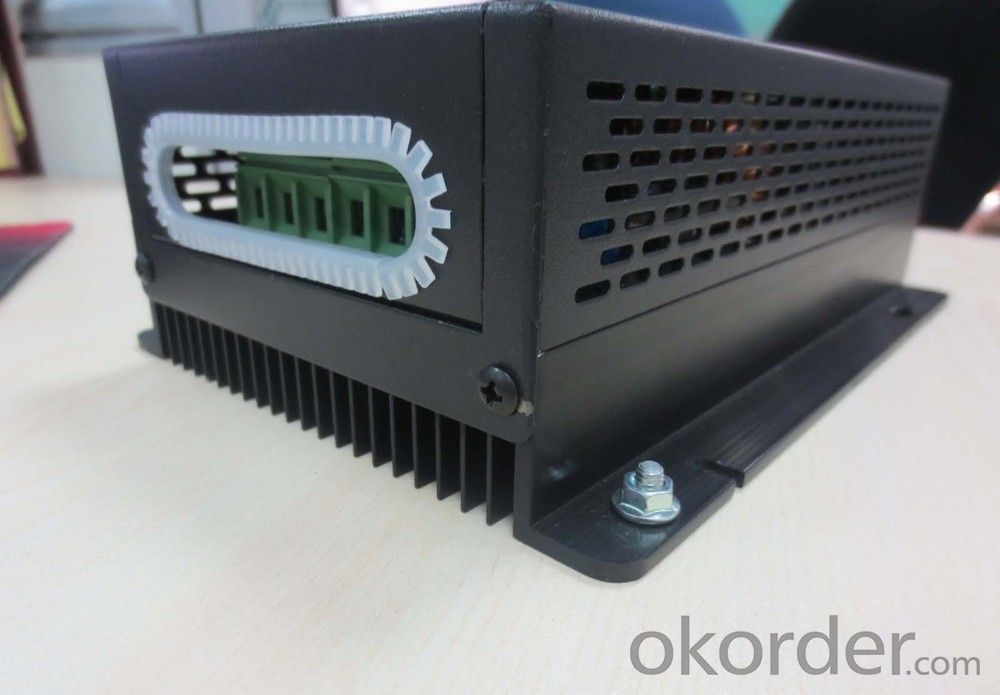
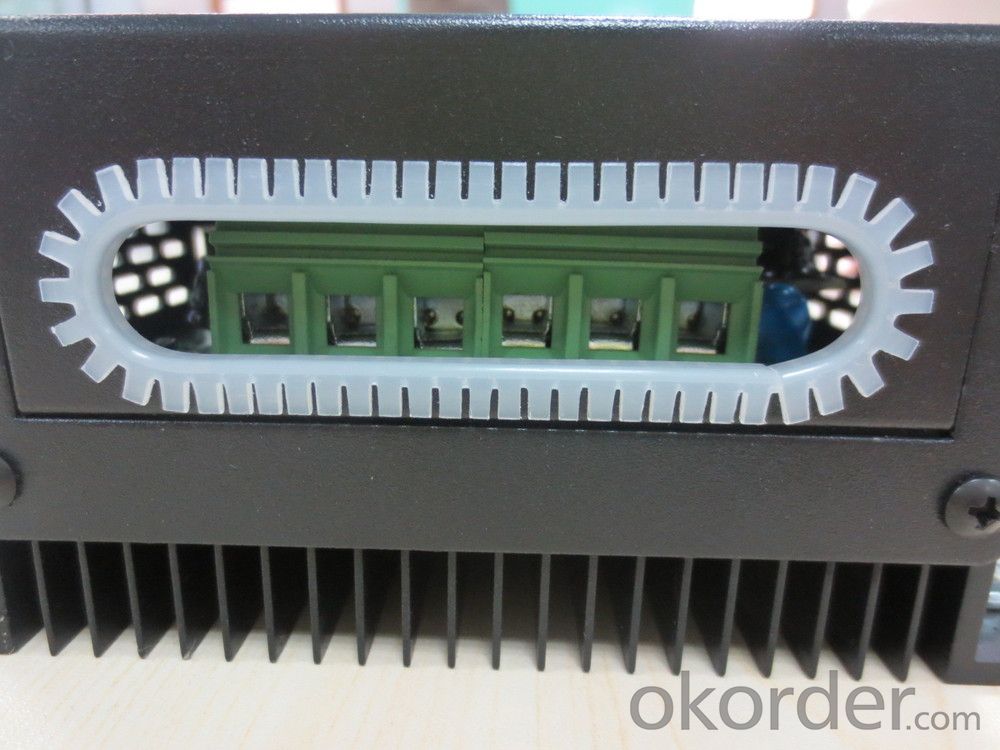
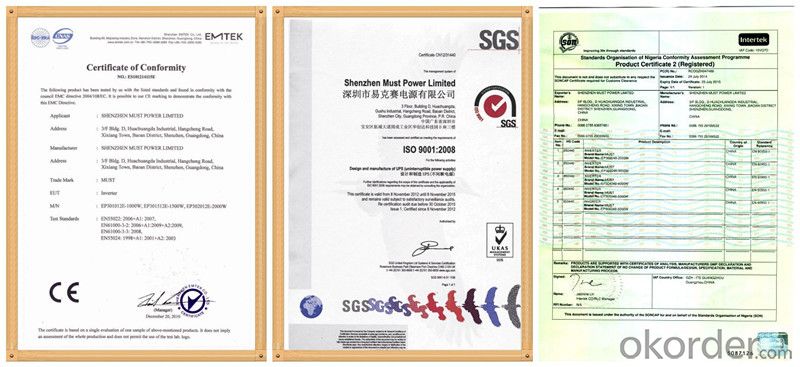
- Q: How does a solar controller prevent battery over-temperature?
- A solar controller prevents battery over-temperature by continuously monitoring the temperature of the battery. It regulates the charging current and voltage to ensure that the battery does not get excessively hot, which could lead to damage or reduced battery life. It may also incorporate features like temperature sensors, temperature compensation, and thermal protection mechanisms to safeguard the battery from overheating.
- Q: What is the maximum charging current that a solar controller can provide to batteries?
- The maximum charging current that a solar controller can provide to batteries depends on the specific model and its specifications. Generally, solar controllers can deliver charging currents ranging from a few amps to several tens of amps, depending on the size and capacity of the system. It is essential to refer to the manufacturer's specifications to determine the maximum charging current for a particular solar controller.
- Q: How does a solar controller handle low voltage disconnect for battery protection?
- A solar controller uses low voltage disconnect (LVD) to protect the battery from being over-discharged. When the battery voltage drops below a predetermined threshold, the solar controller interrupts the power flow between the solar panels and the battery, preventing further discharge. This helps to prolong the battery's lifespan and ensure its optimal performance.
- Q: What is the purpose of the battery state of charge display feature on a solar controller?
- The battery state of charge display feature on a solar controller serves to offer users real-time information on the remaining charge in the battery. By utilizing this feature, users can keep track of the battery's charge level and make informed decisions about managing their energy consumption. Through the display of the battery state of charge, the solar controller assists users in maximizing their energy usage while preventing the battery from being fully depleted. This capability allows users to monitor the battery's capacity and effectively plan their energy consumption, ensuring a steady power supply at all times. Additionally, the battery state of charge display feature also aids in extending the battery's lifespan. Overcharging or deeply discharging a battery can have a detrimental impact on its overall capacity and longevity. By utilizing this feature, users can easily monitor the battery's state of charge and avoid engaging in these harmful practices, consequently increasing the battery's lifespan. In conclusion, the battery state of charge display feature on a solar controller serves the purpose of providing users with valuable information regarding the battery's charge level. It empowers users to optimize their energy consumption, prevent complete battery depletion, and enhance the battery's lifespan.
- Q: What is the maximum voltage and current handling capacity of a solar controller?
- The maximum voltage and current handling capacity of a solar controller can vary depending on the specific model and brand. However, in general, a typical solar controller can handle voltages ranging from 12 to 48 volts and currents ranging from 10 to 60 amps. It's important to check the specifications provided by the manufacturer to determine the exact capacity of a specific solar controller.
- Q: What is the role of a solar controller in preventing damage to the solar panels from electrical faults?
- The role of a solar controller in preventing damage to the solar panels from electrical faults is crucial. A solar controller, also known as a charge controller or regulator, is responsible for regulating and controlling the flow of electricity from the solar panels to the batteries or electrical loads. One of the main functions of a solar controller is to protect the solar panels from overcharging. When the batteries are fully charged, excess energy from the solar panels can cause overcharging, which can damage the batteries and reduce their lifespan. The solar controller monitors the battery voltage and prevents overcharging by diverting the excess energy away from the batteries. Additionally, a solar controller plays a vital role in preventing damage to the solar panels from electrical faults such as short circuits or reverse current. In the event of a short circuit or reverse current, the solar controller detects these faults and immediately interrupts the flow of electricity from the solar panels. By interrupting the electrical connection, the solar controller prevents further damage to the panels and ensures the safety of the entire solar power system. Furthermore, a solar controller also offers protection against over-discharging of batteries. Over-discharging can be harmful to the batteries and may lead to irreversible damage. The solar controller monitors the battery voltage and disconnects the loads when the battery voltage reaches a certain low level. This prevents over-discharging and extends the lifespan of the batteries. Overall, the role of a solar controller in preventing damage to the solar panels from electrical faults is to regulate and control the flow of electricity, protect against overcharging, detect and interrupt electrical faults, and prevent over-discharging of batteries. By performing these functions, the solar controller safeguards the solar panels, batteries, and the entire solar power system, ensuring its optimal performance and longevity.
- Q: Can a solar controller be used with solar-powered electric vehicles?
- Yes, a solar controller can be used with solar-powered electric vehicles. A solar controller regulates and controls the charge from solar panels to the batteries of the vehicle, ensuring efficient charging and preventing overcharging. This helps in maximizing the usage of solar energy and extending the battery life of the electric vehicle.
- Q: How does a solar controller handle voltage drops in the wiring system?
- A solar controller regulates and manages the voltage output from solar panels. When there are voltage drops in the wiring system, the solar controller automatically adjusts the voltage to maintain a consistent and optimal level, ensuring efficient power transfer and preventing any potential damage to the connected devices or batteries.
- Q: What is the maximum load power consumption in standby mode of a solar controller?
- The maximum load power consumption in standby mode of a solar controller can vary depending on the specific model and manufacturer. However, it is typically quite low, ranging from a few milliwatts to a few watts. This low power consumption is essential to minimize energy wastage and ensure the efficient operation of the solar controller. By keeping the load power consumption low in standby mode, the solar controller can conserve energy and extend the overall lifespan of the system.
- Q: How does a PWM solar controller differ from an MPPT solar controller?
- Solar power systems utilize both PWM (Pulse Width Modulation) and MPPT (Maximum Power Point Tracking) solar controllers to regulate battery charging from PV panels. However, their functionality and efficiency differ significantly. A PWM solar controller is a commonly used and basic type of solar charge controller. It controls charging by rapidly switching the PV panel's output voltage between the battery and panel voltages. This creates a pulsating charging current that gradually decreases as the battery reaches full capacity. PWM controllers are simpler and less expensive compared to MPPT controllers. In contrast, an MPPT solar controller is a more advanced and efficient type of solar charge controller. Its main function is to maximize power output from PV panels by tracking the maximum power point of the panel's voltage-current curve. By continuously adjusting the PV panel's output voltage to match the battery's optimal charging voltage, an MPPT controller ensures maximum power extraction, resulting in higher charging efficiency. MPPT controllers are particularly useful when the PV panel's voltage is much higher than the battery's voltage, as they can step down the voltage without wasting excess energy as heat. To summarize, the main difference between PWM and MPPT solar controllers lies in their charging mechanisms and efficiency. While PWM controllers use a basic switching method, MPPT controllers utilize sophisticated electronics to track and extract maximum power from PV panels. As a result, MPPT controllers are generally more expensive but offer higher charging efficiency and better utilization of available solar power.
Send your message to us
Solar Controllers from Thailand Supplier - MPPT Solar Charge Controller 12V 24V 20A
- Loading Port:
- Shekou
- Payment Terms:
- TT or LC
- Min Order Qty:
- 100 pc
- Supply Capability:
- 100000 pc/month
OKorder Service Pledge
OKorder Financial Service
Similar products
Hot products
Hot Searches
Related keywords
